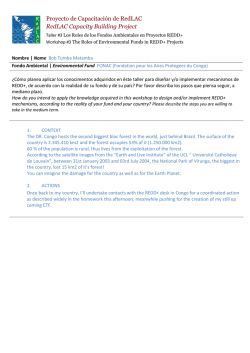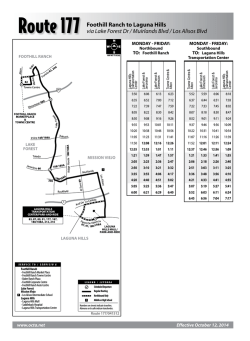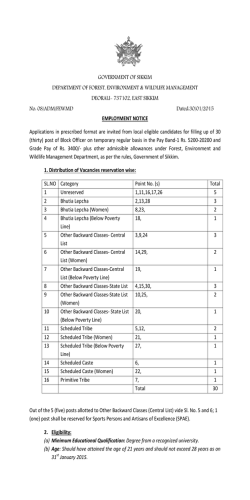
Fighting against drought in Dobrogea by protective forest belts
M PRA Munich Personal RePEc Archive Fighting against drought in Dobrogea by protective forest belts Aurel Lup and Liliana Miron Ovidius University of Constanta, Ovidius University of Constanta 20. November 2014 Online at http://mpra.ub.uni-muenchen.de/61724/ MPRA Paper No. 61724, posted 1. February 2015 05:35 UTC FIGHTING AGAINST DROUGHT IN DOBROGEA BY PROTECTIVE FOREST BELTS LUP AUREL1, MIRON LILIANA 2 Abstract: Dobrogea province is composed by Constanta and Tulcea counties, situated in the South-eastern part of Romania, and it is known as one of the driest parts of Romania. The yearly amount of precipitations is no more than 400-450 mm. The yearly average temperature is around 10.5 oC; the soils are of good quality but the main factor limiting the crops is, in this case, the lack of the water. During 1949 and 1955, studies were carried out concerning the damages produced by drought and the influence of the forest plantations for protective purposes on crops. Consequently, there have been planted protective forests on a few thousand hectares in the southern part of Constanta county but which were insufficient in order to protect all the agricultural lands. Because of the uncertainty surrounding the rehabilitation of the irrigation systems in the near future in Dobrogea, several projects were made in order to set up protective forest plantations. These projects include 70 localities and there have already been planted protective forests in some of them. The width of these forests is 10 m, the planting scheme is 2 x 1 m, and the distance between them is variable, by the case. The locust tree is the used species. Key words: drought, damage, forest belt INTRODUCTION For a long time, deforestation was the only way to increase the cultivatable area needed in order to produce food for a more and more numerous population. Then, deforestation was conducted for the construction of ships, and, later for the railway beds for the coal industry; nowadays, despite the ecologists’ signals and governments’ regulations, deforestation continues. Every day, thousands of hectares of forest disappear; due to the aggravation of this phenomenon, the agriculture, i.e. the only food source, is in danger. Erosion, flooding, desertification, soil washing are phenomena threatening the planet's ability to ensure mankind’s food security. The disastrous effects of drought on crops completes this grim picture, and the forest plantations for protective purposes are considered as one of the main means of fighting against them. MATERIALS AND METHODS There were analyzed experimental data regarding the influence of the forest protective belts on agricultural yield for any crops the such as wheat, mays, barley and other cereals species, as well the influence on the climate: air temperature wind speed soil moisture keeping of the water in the soil. Finally we are proposed any schemes and methods for setting up some forest protective belts against the drought in Constantza county. RESULTS AND DISCUSSIONS Deforestation had important consequences, just as serious as the shortage of food areas. Huge areas, once fertile, have undergone an intense process of desertification because the lack of forest vegetation generated one of the most damaging phenomena to agriculture, namely drought. The acknowledgement of this situation was late - in the early twentieth century – but the measures taken against deforestation remained fragile in comparison to the evolution of the phenomenon. In Romania, until the mid-nineteenth century, a large part of the Romanian Plain, Baragan and Dobrogea were covered with forests, which, later, had been cleared in order to make way for the grain, which was well sold at the export. 1 2 Professor Dr. Eng., Ovidius University of Constanta. email: [email protected] Dr. Eng. Ovidius University of Constanta The effect was quick to appear; thus, one of the greatest landowners began planting forests of locust trees in order to “shelter the crops” 3, said Ctin. Garoflid, one of the ministers of agriculture of the time. Dobrogea case. In the past - before 1850, as M. Drăcea, the great sylviculturist, said Northern Dobrogea, with the exception of a narrow strip in the north and east of Tulcea county, as well as the southwest corner of Constanta county, was covered by ancient forests - forests that have not been found by the Romanian agronomist- scholar Ion Ionescu de la Brad, who, in 1850, scientist discovered Dobrogea with a dry climate and burning soils, where plants suffered more from water shortages, from rain shortages, rather than from nutrients. Ionescu de la Brad also stated that the very word Dobrogea would be translated Table 1 from Turkish as the land without trees4. The evolution of the forest fund in Dobrogea, 1927-1989 In its turn, the Romanian Constanta county Tulcea county Administration of Dobrogea has not spared Area Area Share in Years the forests. In 1902, a local newspaper was Share in thousands thousands the the county% announcing: Tulcea forests are in a real ha ha county% mess... Trees have been cut down and cut 1927 25,6 3,7 106,7 12,7 down, without ration, without control; the 1935 13,6 2,0 72,0 8,6 1968 24,5 3,5 89,7 10,6 plunder was practiced in every way; the 1989 39,0 5,5 95,5 11,2 public fortune has been operated without care about anyone or anything. According to the statistics from the second half of the `20, professor Drăcea quotes for the two Dobrogea counties the following data: in Constanta county: 19 500 ha, of which 25.1% gaps; in Tulcea county: 80 400 ha, of which 10.0% gaps. A forest fund development in Dobrogea, during the planned economy period, compared to the previous period is presented in Table 1. In 2000, the forest fund occupied, in Constanta county, 3.5% thousand hectares (representing 5.0% of the county area) and 92,900 ha in Tulcea county (representing 10.9% of the county area). Numerous observations and climatological studies have highlighted the arid nature of the area. As an agro-meteorological phenomenon, the drought is defined as the period when the total amount of rainfall is below average and when the distribution per seasons is unfavorable to plants’ needs (Gh.Ionescu Şişeşti, 1958-1961). Under this aspect, in Dobrogea, we meet the strongest and the most frequent water shortage caused both by the lowest amount of precipitation as well by their uneven distribution throughout the year, in relation to crop needs. The aridisation phenomenon in Dobrogea. According to relatively recent studies, in Dobrogea, the quality of the agricultural land is affected by what is called, in the language of FAO, the danger of desertification, mainly determined by two factors, i.e. the vulnerability of the land in connection to the mentioned phenomenon and the human activity (including grazing). In relation to the continental climate, there are considered vulnerable those areas where the ratio between precipitation and the potential evapotranspiration (Penmann) is less than 0.75. In Northern Dobrogea, this phenomenon was highlighted on the lower and middle levels of the relief in Jurilovca, Cerna, Babadag, Tulcea, Macin, Topolog (moderately-strong steppe vulnerability and weak-moderate pre-steppe (Munteanu, 1988). In southern Dobrogea, the aridity phenomenon has also been identified in the lower and middle levels of relief at distances greater than 70 km from the coastline (Mihailescu 1993). As a remedy, the reforestation and irrigation have been proposed, the latter, however, if practiced defectively, may entail unintended consequences, such as salinization or erosion. The influence of protective forest belts on the environment. The influence of protective forest plantations on the microclimate is complex and it results from the influence of: the wind, the air temperature and the sunlight, the hydrological regime, the soil formation process and the macroclimate. The creation of the protective forest plantations was imposed in order to fight against drought. Droughts are usually accompanied by dry winds. 3 4 Ctin.Garoflid: Agricultura veche. Tiparul … A.Lup: Dobrogea agricolă, de la legendă la … globalizare. Ed Ex Ponto, Constanţa, 2003, p.788 şi 757. The influence of protective forest belts on the wind. We should consider as harmful to the crops in our steppes all the winds that do not bring rain, because they evaporate the water from the soil and make the plants transpire more. The influence of protective forest plantations on the speed of these winds largely determines their other influences on the microclimate. The influence of protective forest beltss on the hydrological regime. The tree crowns cover the soil and their leaves intercept the sunrays so that a small number of these rays touch the ground. The retention of rain and snow by tree crowns, trees and shrubs. The trees and shrubs retain in their crowns 10-40% of the total rainfall. The water thus retained is rapidly evaporated, the rest of the precipitation thus contributing to wetting the soil. The influence of protective forest belts on soil water evaporation. The research reveals that both during the daytime and the nigh, the soil water evaporation is lower in the area protected by forest plantations, the greatest percentage reduction occurring during dry winds. The influence of protective forest belts on crop transpiration. The protective forests belts contribute to the increase of the air humidity in the crop layer and, due to wind speed reduction, they retain for a longer time this layer unrefreshed and reduce the intensity of plant transpiration. The influence of protective forest belts on the snow deposit in the protected area. In the open field, a good part of the snow is blown by the wind and piled into gullies, ravines and depressions, generally. In the protected area, the snow layer is deposited Figure 1 uniformly in a layer descending up to 18-40 over a length of about 200 m (fig. 1). The influence of forest belts on crops. Based on the research conducted in order to increase the agricultural crops due to protective forests belts it was found that: protective forests increase, in the protected area – on all soil types –, all the crops: cereals, pulses and oil crops, industrial crops, vegetables and herbs. From the experiments conducted in Dobrogea, by dr. eng. I. Table 5 Lupe, it results that the average crops from The distribution of protective belts by regions and the lands protected by forest belts, as a emergencies in Romania percentage compared to the unprotected Region area - thousands ha lands (100%), are: Regions Emergen Emergen Emergen Emergen cy 1 cy 2 cy 3 cy 4 - autumn wheat ........... 123-176% Dobrogea 580 247 827 - oats ........................... 123-246% Baragan 940 751 143 1834 - corn .......................... 123% Olt-Argeş Plain 175 530 428 1133 - dry hay .................... 395% Oltenia Plain 405 298 266 969 Tisa Plain 372 233 216 821 The establishment of protective Transylvania forest belts. Altogether, for the dry regions 487 272 759 Plain of the country, there are required 654 800 North-East of 435 715 1150 Moldavia ha of protective forests belts for the Total 3394 2774 1325 7493 agricultural land and 12,400 ha of protective belts along rivers - therefore a total of 667 200 ha of protective forests to which we need to add the forest plantations for greening the roads and the populated urban and rural centers, the anti-erosion forest plantations and those for agricultural amelioration works etc. Only in Dobrogea there are required forest belts on an area of 545000 ha on lands with a slope below 3o. For example, we present the map of the country with the panoramic territorial distribution of the protective forest belts, made of dr. eng. Lupe and V.Jianu (Fig. 2). Types of protective forest belts. The type of protective forest belts is determined by their stand composition. According to the number of the species in a forest plantation, we distinguish between: the pure type, which consists of a single species, and the mixed type, which includes several species of trees and shrubs. The forest belts of mixed type are more resistant than the pure ones. They are classified in the following main subtypes: forestry-shady; forestry-shrub and combined. The forestry-shady mixed type includes protective forest belts where the tree crowns are Figure 2 placed on two floors. The first floor is higher and consists of the basic species of the forest plantation; the second floor, situated lower, consists of the accompanying species. The forestry-shrub mixed type. The tree species are mixed in the row or rows with shrubs, in an amount of at least 50%. The combined type is used on the proper chernozem to the degraded chernozem. The distance between the protective forest belts is calculated according to the height reached by the base species from the forest plantation at the age of 25-30 years. The protective forest belts, which also include species that grow quickly, reach, in the area of degraded and proper chernozem and in the area of reddish-brown forest soil, at this age, 17 to 18 m; in the area of chocolate chernozem 14 m; on the brown chernozem and on the light-brown steppe soil - 8-12 m. The favorable influence of the protective forest belts on the agricultural field is felt at 25 ha in the defended area plus 5 ha in the area Figura 3. Different schemes for the arrangement of species in protective forest belts situated before the forest plantation, resulting thus in 30 ha. Therefore, there are recommend the following distances between the main forest belts: - Reddish brown forest soil: 500-600 m - Proper and degraded chernozem: 400-500 m - Chocolate chernozem: 350-400 m - Brown chernozem: 300-350 m - Dry light-brown steppe soil: 250-300 m The recommended width of protective forest p belts is 8-20 m. The forest plantations with a width of less than 8 m should be avoided, because, in such forest belts ns, there lacks the required forest environment. Also, widths greater than 20 m should be avoided. Generally, in the steppe, there are recommended: 14-20 m for the main forest belts and 8-11 m for secondary forest belts. In recent years, in Constanta county, there has been conducted a study whose objective was to substantiate the need to establish a network of forest belts for the protection of fields, and to determine their location. The forest belts for the protection of fields were placed at the following distances from: sheepfold roads (in close proximity); irrigation channels (in close proximity of the roads serving them); grids - at 30 m If national and county roads are sheepfold limits, the plantation of field protection forests should be avoided because the NRA (National Road Administration) regulations on road belts provide for a minimum plantation distance of 30 m from the road, which would lead to the undue fragmentation of the property (the strip of land remaining between the road and the forest belts cannot not be properly used for crops). It is noted that, where the power lines cross, the forest belts shall consist only of shrubs underneath them, at a distance of 20 m from the edge of the projection of power lines. Given that the optimal distance for forest belts, set in the technical standards, could not be met due to local topography and cadastral features, the network was created from one type of forest plantations (main - 10 m width), aiming at compensating the decrease in the protective effect due to the increase in the distances between the forest plantations, by increasing the area occupied by forest vegetation. In order to allow the mechanized execution of planting works, there was adopted the planting scheme of 2 x 1 m (5000 seedlings / ha). The total estimated value of the investment: 282 506 651,42 RON. Until now, there have been planted protective forests belts especially in the south of Constanta county, in the area of Ostrov, Lipnita, Viişoara, Cobadin, Ciocarlia. In Amzacea, there have been planted protective forests belts over an area of 14 hectares, representing a share of 3.7% of the area of 382 ha, which they protect. For each ha of protected area there are 0,037 ha or 370 m2 of protective forests belts. Another feature of the current protective forests belts is the fact that they are composed only of locus trees - the only species currently available. CONCLUSIONS 1. Along with irrigations, the plantation of forests belts for the protection of fields is the main method to combat drought. 2. Compared to irrigation, which depends on a water source, protective forests belts can be placed especially in steppe areas, where water is scarce or where the cost of irrigation is high, such as Dobrogea, for example. 3. The current orientation for the re-establishment of protective forest belts is based on both scientific considerations and practical reasons. 4. Unlike irrigations, which, in addition to the beneficial effect on crops, also have negative effects on soil erosion, salinization and even marsh, forest belts instead protect the soil, help maintain its sustainability and even improve its quality. 5. The effects of forest belts on the environment, in general, are well known: wind mitigation, improving soil water regime, mitigation or even surcease of the soil erosion on slopes. 6. Among these practical reasons, we are also faced with the uncertainty of the costly rehabilitation of the irrigation systems; this rehabilitation depends on the bodies and institutions at the central-national level; on the other hand, the belts of protective forests is available to any user of agricultural land. 7. We consider that the land cadaster action and the creation of nursery seedlings will contribute, in the near future, to the restoration of the system of protective forest belts at the regional or even at the national level. BIBLIOGRAPHY 1. 2. 3. 4. 5. 6. 7. Chirilă Ctin., Miron Liliana (2010): Managementul economic al resurselor agriculturii şi dezvoltarea ruralagrară în România. Ed. Universitară, Bucureşti. Ionescu Şişeşti Gh., Staicu Ir. (1968): Agrotehnica, vol.I. Ed. Agrosilvică de stat, Bucureşti. Ionescu Ion de la Brad (1968): Opere agricole, vol. I. Ed. Academiei RPR, Bucureşti. Lup A. (1997): Irigaţiile în agricultura României. Ed.Agris, Bucureşti. Teaci D. (1980): Bonitarea terenurilor agricole. Ed. Ceres, Bucureşti. x x x (1956): Colectiv de autori: Manualul inginerului agronom, vol. V. Ed. Tehnică, Bucureşti. x x x (2008): Studiu de fundamentare a necesităţii instalării perdelelor forestiere de protecţie a câmpului din judeţul Constanţa.
© Copyright 2026





